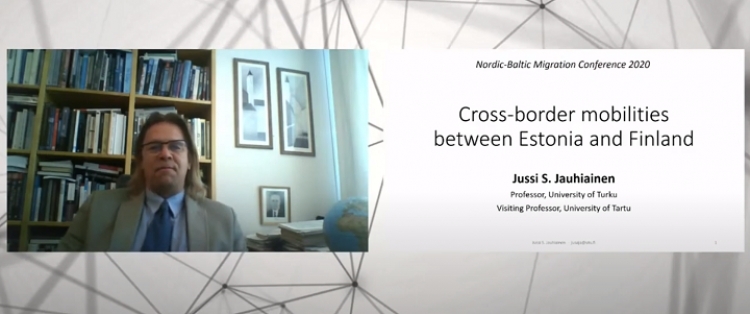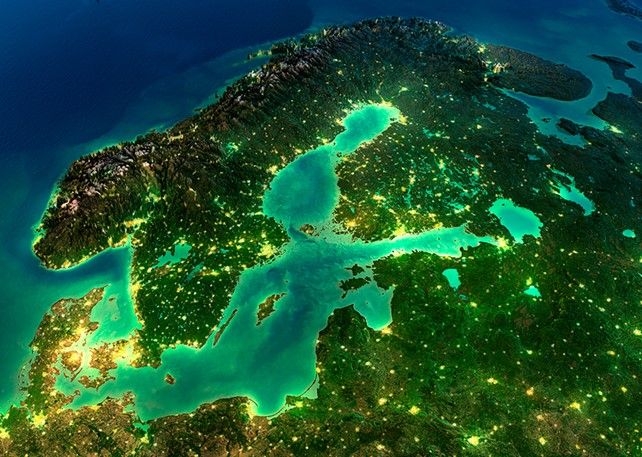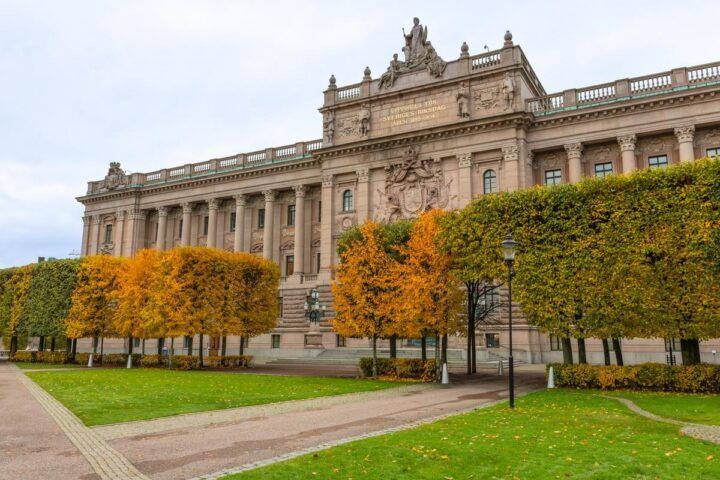Jussi Jauhiainen at Nordic-Baltic migration conference: The movement of people between Estonia and Finland benefits both countries

Professor Jussi Jauhiainen from the University of Turku opened this year’s migration conference with a presentation on migration between Estonia and Finland past and present. As a professor, he has himself been a transnational moving between the two countries and has 30 years of experience in the field.
In order for a border to be crossed, there must be a border in the first place. Borders both unite and separate people. Unification means that goods and people start moving between neighbouring countries. Separation, on the other hand, means that sovereign territorial connections create different identities and practices. However, many people are transnationals who unite countries and cultures. A cognitive approach leads to mutual understanding, but people on both sides of the border still have a slightly different outlook on the future. This phenomenon – of similarities and differences existing side by side – creates a basis for the birth of innovation and exciting ideas.
There are borders which are easy to cross and those which are not. Crossing unobstructed borders is not a problem, but there are also borders whose crossing is complicated by both natural conditions and bureaucracy. Borders which are harder to cross also make it difficult for the number of transnationals to grow. And yet they are intermediaries: moderators between cultural spaces whose identities feature aspects from both sides of the border.
In the case of Estonia and Finland it is important to remember the long history of migration between the two countries. Thousands of years ago we were one people, from which a splinter group moved northwards and became the Finns. A hundred years ago, cross-border practices helped give rise to awareness of nationhood in both countries. Some people were very active in moving between and putting their knowledge to good use in the two countries – Koidula, Lönnrot, Päts, Granö and others. These were the people who largely laid the foundations for the national awakening of both the Finns and the Estonians. More recently, the focus has been on economic relations. The political situation held this development back for quite some time. Making the most of differences when shopping has promoted movement since the Soviet era, but especially since the early days after Estonia regained its independence. This required logistical opportunities that would help people physically move from one place to another and favoured the formation of transnational identity.
We have studied recent migration practices, looking at those who both temporarily and permanently move between Estonia and Finland. We knew that many were day-trippers, but some travel a lot more, stay for longer or move backwards and forwards between the countries – these are people with transnational identities. Around two million people move back and forth between Finland and Estonia every year. Of them, 1% or 20,000 people are transnationals. Estonians make a lot of short trips; Finns make fewer.
The state of emergency caused by COVID-19 has had a significant impact on the movement between the two countries of people on both sides of the gulf. This has been a very marked change, and its short- and long-term consequences will be considerable. Free movement between Estonia and Finland is not something which should be taken for granted, although that is what we tend to do. We have no idea today what the consequences of border closures will be in either the short or long term. Will more people want to return to Estonia from Finland, or vice versa? It is important that with strategic cooperation we can boost our collective resilience to crises. We cannot predict the future either. There has been a lot of talk of a tunnel between Helsinki and Tallinn, and in less than 10 years we will have 6G networks, which will clearly have an impact on digital connectedness.
What is important is the question of how we can strike a balance so that we are similar enough, but not so much that we lose our ability to think innovatively. Free movement across borders between Estonia and Finland benefits both countries.


